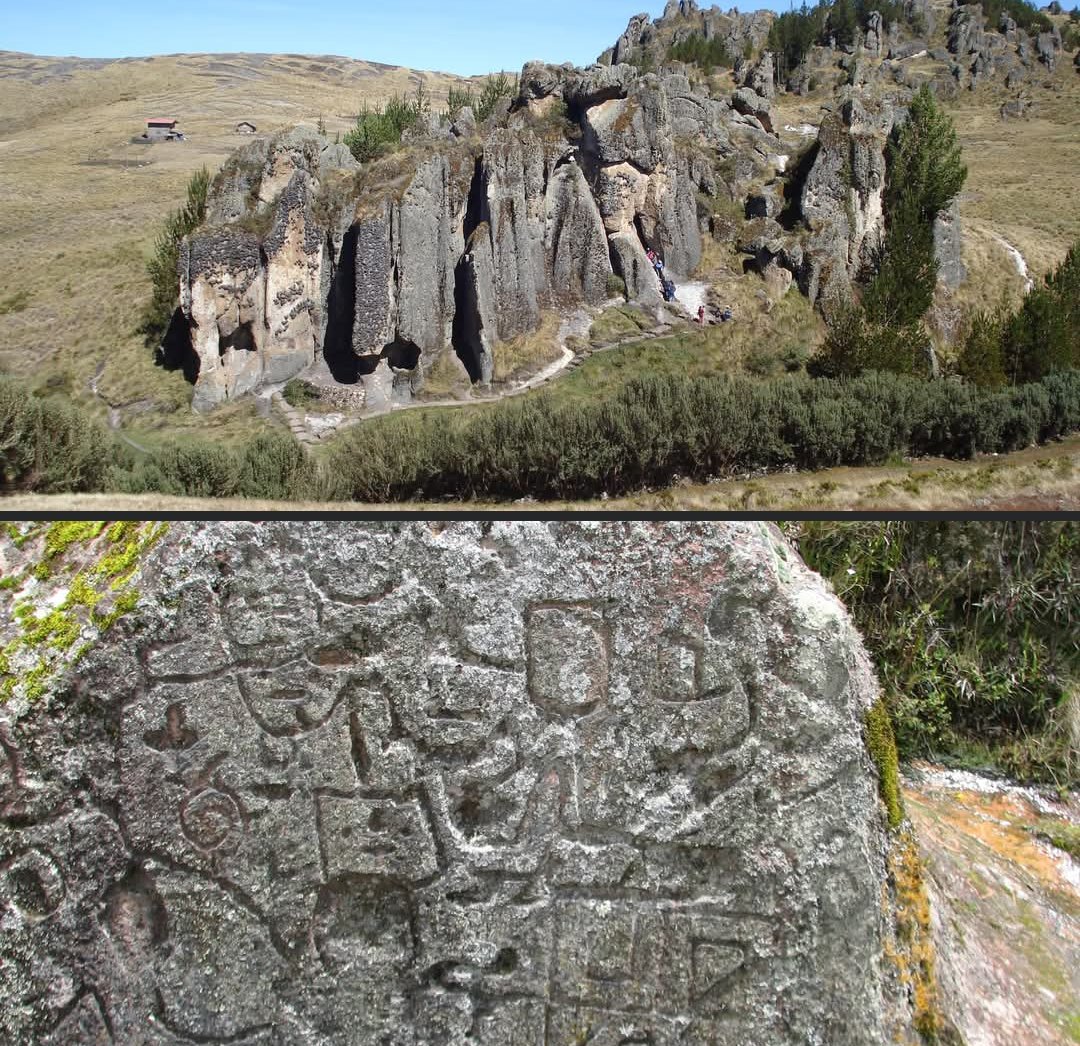[GUEST ACCESS MODE: Data is scrambled or limited to provide examples. Make requests using your API key to unlock full data. Check https://lunarcrush.ai/auth for authentication information.]  ArchaeoHistories [@histories_arch](/creator/twitter/histories_arch) on x 233.1K followers Created: 2025-06-17 08:49:00 UTC Cumbemayo is an archaeological site located in Cajamarca region of northern Peru 🇵🇪, about 20km southwest of Cajamarca, at an altitude of approximately 3500m. Human activity dates to around 1500 BC and is attributed to the Cajamarca culture. The site is most notable for its intricate aqueduct system, distinctive rock formations and mysterious petroglyphs scattered throughout the area. The main feature of Cumbemayo is a sophisticated aqueduct, carved with remarkable precision into volcanic stone. It extends over a distance of about nine kilometers and was engineered to transport water from higher elevations to agricultural fields and possibly to a large reservoir that once existed at the base of Santa Apolonia Hill. The system ensured a stable water supply in this highland environment and is considered one of the earliest examples of hydraulic engineering in the Andes. Near the aqueduct is a prominent natural rock formation called the Sanctuary, shaped like a human head with its mouth forming a grotto. Inside this grotto, along with surrounding caves, are a number of petroglyphs. These carvings are thought to resemble motifs from the Chavín culture and include abstract shapes and possible anthropomorphic figures. The site is also known for a dramatic cluster of natural rock formations called Los Frailones. These towering stone pillars can reach heights of up to 18m and were formed over centuries by erosion from wind and rain. The shapes of the pillars often resemble human or animal figures, and local tradition interprets them as resembling monks in a procession, which is how the formations earned their name, frailones, meaning friars in Spanish. First photo: John PC, CC BY-SA XXX Second photo: AgainErick, CC BY-SA XXX © Cosmos University #archaeohistories  XXXXX engagements  **Related Topics** [peru](/topic/peru) [Post Link](https://x.com/histories_arch/status/1934896046171119705)
[GUEST ACCESS MODE: Data is scrambled or limited to provide examples. Make requests using your API key to unlock full data. Check https://lunarcrush.ai/auth for authentication information.]
 ArchaeoHistories @histories_arch on x 233.1K followers
Created: 2025-06-17 08:49:00 UTC
ArchaeoHistories @histories_arch on x 233.1K followers
Created: 2025-06-17 08:49:00 UTC
Cumbemayo is an archaeological site located in Cajamarca region of northern Peru 🇵🇪, about 20km southwest of Cajamarca, at an altitude of approximately 3500m. Human activity dates to around 1500 BC and is attributed to the Cajamarca culture. The site is most notable for its intricate aqueduct system, distinctive rock formations and mysterious petroglyphs scattered throughout the area.
The main feature of Cumbemayo is a sophisticated aqueduct, carved with remarkable precision into volcanic stone. It extends over a distance of about nine kilometers and was engineered to transport water from higher elevations to agricultural fields and possibly to a large reservoir that once existed at the base of Santa Apolonia Hill. The system ensured a stable water supply in this highland environment and is considered one of the earliest examples of hydraulic engineering in the Andes.
Near the aqueduct is a prominent natural rock formation called the Sanctuary, shaped like a human head with its mouth forming a grotto. Inside this grotto, along with surrounding caves, are a number of petroglyphs. These carvings are thought to resemble motifs from the Chavín culture and include abstract shapes and possible anthropomorphic figures.
The site is also known for a dramatic cluster of natural rock formations called Los Frailones. These towering stone pillars can reach heights of up to 18m and were formed over centuries by erosion from wind and rain. The shapes of the pillars often resemble human or animal figures, and local tradition interprets them as resembling monks in a procession, which is how the formations earned their name, frailones, meaning friars in Spanish.
First photo: John PC, CC BY-SA XXX Second photo: AgainErick, CC BY-SA XXX
© Cosmos University
#archaeohistories

XXXXX engagements
Related Topics peru